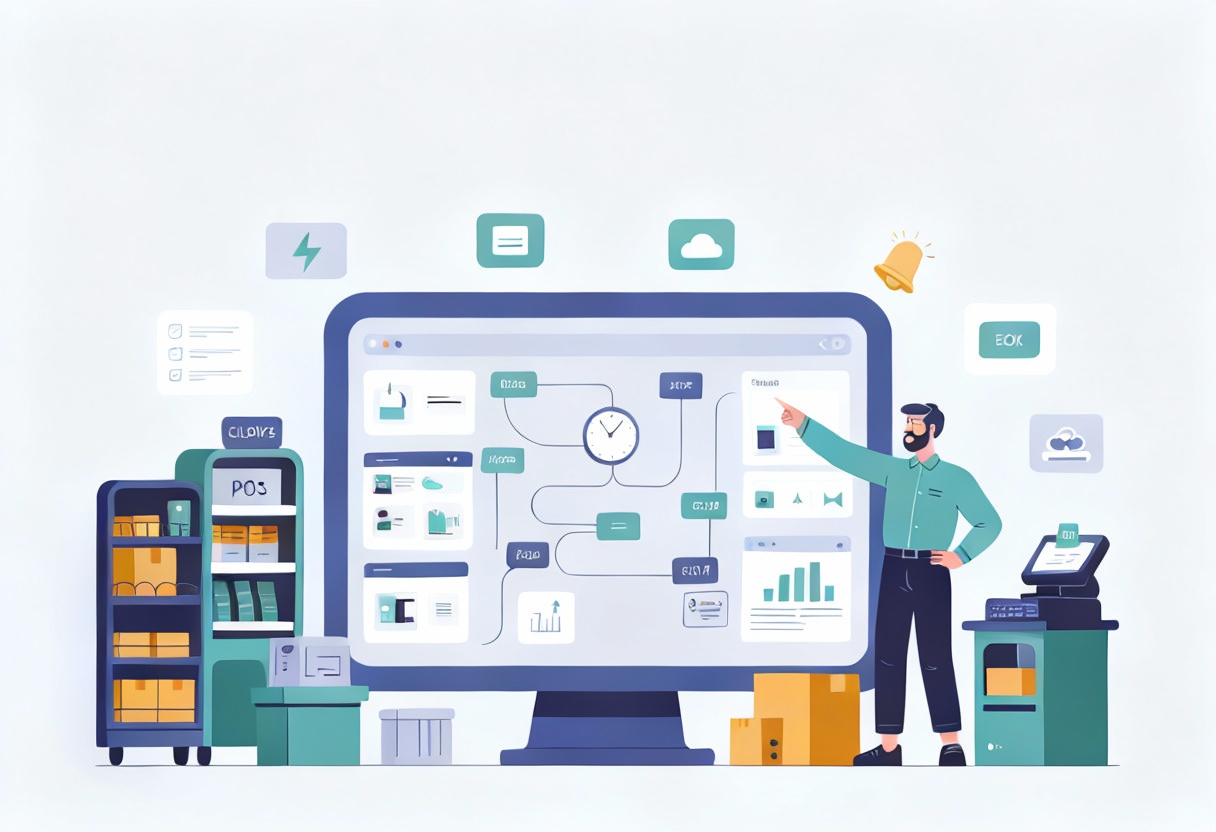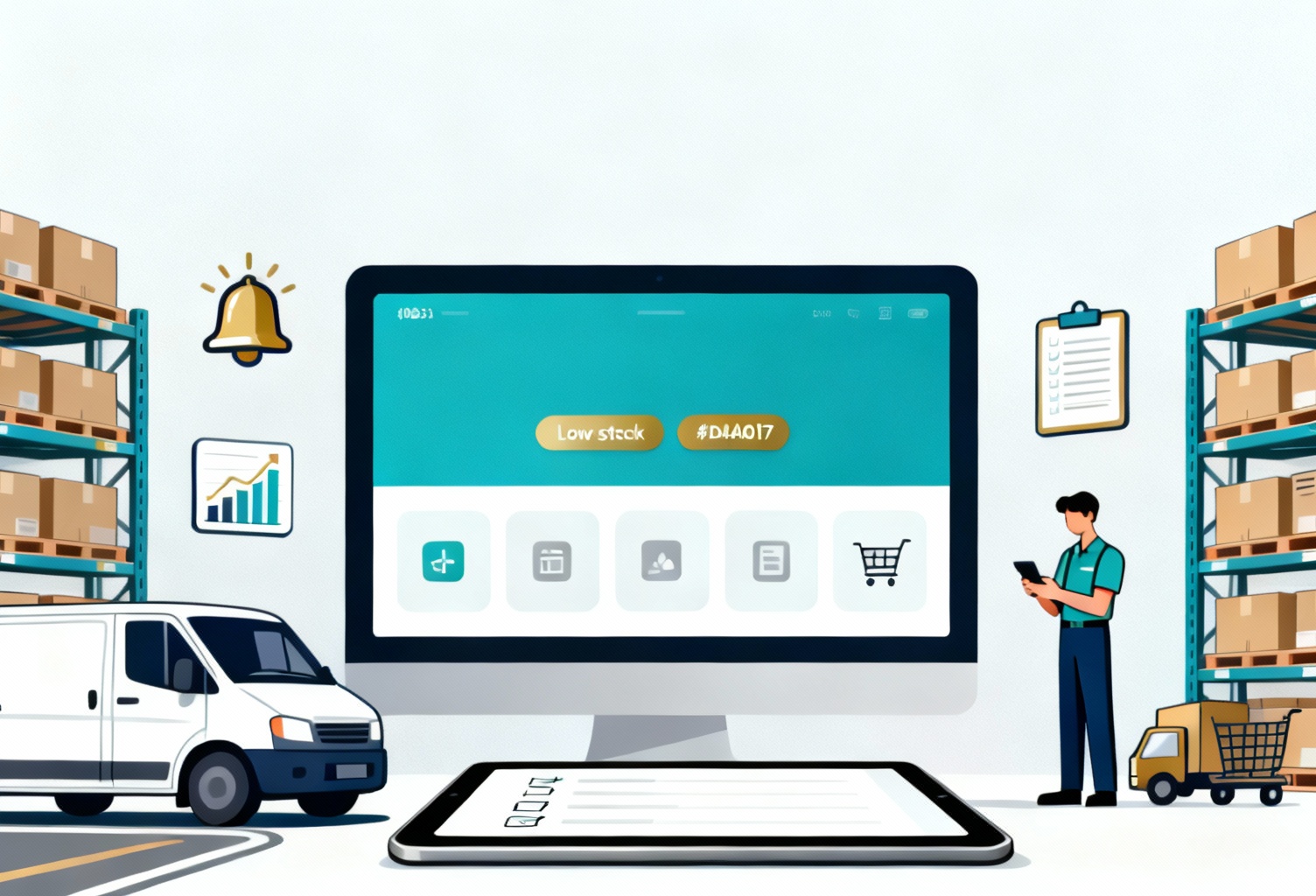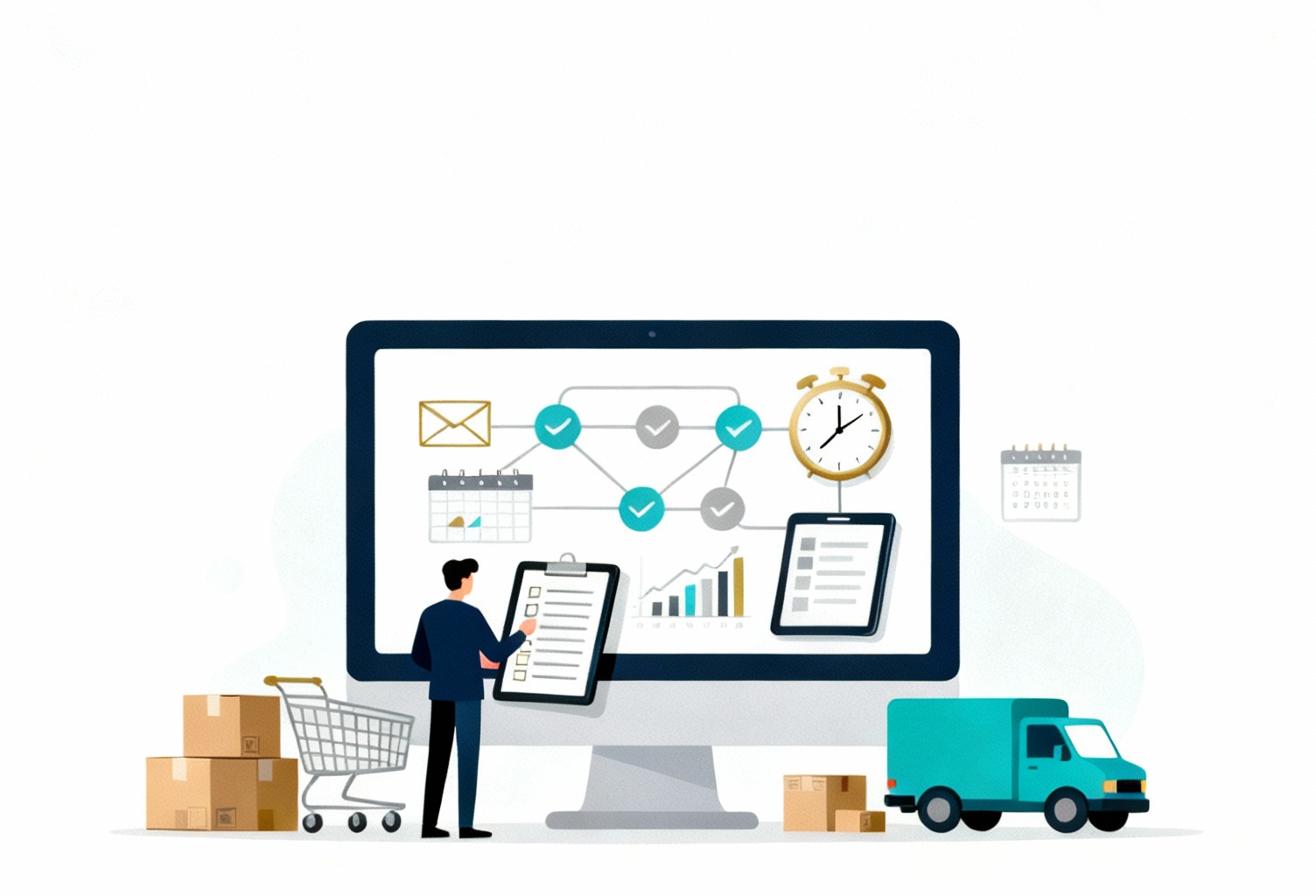In the retail industry, competition is fierce and customer expectations are high. Customers have more choices than ever when it comes to where and how they shop, and they are looking for more than just products. They are looking for experiences that make them feel valued, engaged, and satisfied.
In-store experiences are the interactions and impressions that customers have with a physical store, its products, and its staff. Conversions are the actions that customers take that generate value for the store, such as making a purchase, signing up for a loyalty program, or leaving a positive review.
In this article, we will explore why in-store experiences are important for retail success, what are the challenges of creating positive in-store shopping experiences in the digital era, and what are the best practices for enhancing in-store customer experiences and conversions.
The importance of in-store experience for retail success
In-store experiences are not only important but essential for retail success. According to a global survey by Shopify, 32% of consumers say they are likely to engage with in-store experiential moments, and 81% of Gen Z consumers prefer to shop in stores to discover new products. Moreover, 95% of consumers expect retailers to have COVID-19 safety protocols in place for in-store shopping.
Experiencing in-store can influence customer satisfaction and loyalty, differentiate retailers from competitors and online channels, and create opportunities for upselling and cross-selling.
In-store experiences influence customer satisfaction and loyalty
Customer satisfaction and loyalty are key indicators of retail performance and growth. Satisfied customers are more likely to return, spend more, and recommend the store to others. Loyalty programs can also incentivize repeat purchases and increase customer lifetime value.
In-store experience can affect customer satisfaction and loyalty by meeting or exceeding customer expectations, providing emotional value, and building trust and rapport. For example, a study by Statista found that the most important attribute of an in-store shopping experience is having a sales associate with deep knowledge about the product range, with 63.8% of respondents claiming this to be important.
In-store experiences differentiate retailers from competitors and online channels
In a crowded and competitive market, retailers need to stand out from the crowd and offer something unique and memorable to their customers. In-store experiences can help retailers differentiate themselves from competitors and online channels by creating a distinctive brand identity, offering exclusive benefits, and leveraging sensory stimuli.
For example, TOMS, a shoe retailer, deployed virtual reality (VR) headsets in 100 of its stores to enable shoppers to experience the brand uniquely. The VR experience transported customers to Peru, where they could witness the impact of TOMS’ social mission of providing shoes to children in need.
In-store experience creates opportunities for upselling and cross-selling
Upselling and cross-selling are sales techniques that aim to increase the average order value by offering additional or complementary products or services to customers. Upselling and cross-selling can boost revenue, profit margins, and customer satisfaction.
►►► Optimal solution set for businesses: Multi store POS, Next-gen POS, Inventory Management Software (MSI), Self Service, Automation, Backorders
In-store experiences can create opportunities for upselling and cross-selling by showcasing product features and benefits, providing personalized recommendations, and triggering impulse purchases. For example, Charlotte Tilbury, a beauty brand, installed makeover GIF booths in its stores, where customers could try on different makeup looks and share them on social media. The booths also displayed product information and QR codes that linked to the online store.
The challenges of creating positive in-store experiences in the digital era
Creating positive in-store experiences is not without challenges. The digital era has brought about changes in customer behavior, preferences, and expectations that retailers need to adapt to. Some of the challenges of creating positive retail store experience in the digital era include:
The impact of the COVID-19 pandemic and changing customer behavior
The COVID-19 pandemic has had a profound impact on the retail industry, forcing the closure of physical stores and causing uncertainty for the future of the in-store experience. The pandemic has also changed customer behavior, such as consolidating shopping trips, switching stores based on availability and hygiene considerations, and trying new omnichannel models such as buy online, pick up in-store (BOPIS), or grocery delivery.
Retailers need to respond to these changes by implementing safety measures such as frequent sterilization of store premises, curbside pickup, contactless payment options, etc., as well as offering flexible options such as BOPIS or home delivery.
The need for personalization and customization
Customers today expect personalized and customized experiences that cater to their individual needs, preferences, and tastes. They want to feel special, understood, and valued by the brands they interact with. They also want to have control and choice over their shopping journey.
Retailers need to use technology and data to personalize and tailor the customer journey, such as using digital signage, mobile apps, beacon technology, facial recognition, etc., to deliver relevant and timely messages, offers, and recommendations. Retailers also need to offer customization options such as product configurators, monogramming, engraving, etc., to allow customers to create their unique products.
The complexity of inventory and order management
Inventory and order management are essential for ensuring product availability, fulfilling customer demand, and optimizing operational efficiency. However, inventory and order management can also be complex and challenging, especially when dealing with multiple channels, locations, and suppliers.
Retailers need to use technology and data to streamline and automate inventory and order management processes, such as using cloud-based software, RFID tags, barcode scanners, etc., to track inventory levels, locations, and movements in real-time. Retailers also need to integrate their inventory and order management systems across channels, locations, and suppliers to ensure accuracy, visibility, and coordination.
The difficulty of measuring and optimizing performance
Measuring and optimizing performance is crucial for evaluating the effectiveness of in-store experiences and identifying areas for improvement. However, measuring and optimizing performance can also be difficult, especially when dealing with qualitative aspects such as customer satisfaction, loyalty, emotions, etc.
Retailers need to use technology and data to measure and optimize performance, such as using analytics tools, surveys, feedback forms, etc., to collect and analyze customer data. Retailers also need to use key performance indicators (KPIs) such as sales revenue, conversion rate, average order value, customer retention rate, etc., to monitor and evaluate their in-store shopping experiences.

The best practices for enhancing in-store experiences and conversions
To overcome the challenges of creating positive in-store experiences in the digital era and achieve retail success, retailers need to follow some best practices. Some of the best practices for enhancing in-store customer experiences and conversions include:
Use technology and data to personalize and tailor the customer journey
Technology and data are powerful tools that can help retailers create personalized and tailored customer journeys that meet or exceed customer expectations. By using technology and data, retailers can:
- Segment customers based on their demographics, behavior, preferences, etc., and target them with relevant messages, offers, and recommendations.
- Customize products based on customer input or preferences, such as size, color, style, features, etc.
- Personalize the store environment based on customer data or preferences, such as lighting, music, scent, etc.
- Provide omnichannel services that allow customers to seamlessly switch between online and offline channels.
Some examples of retailers that use technology and data to personalize and tailor the customer journey are:
- Uniqlo, a Japanese retailer that launched its first neuroscience fashion campaign in Australia. The campaign used brainwave technology to measure customers’ reactions to different clothing items and generate personalized recommendations based on their moods.
- Rebecca Minkoff, a fashion brand that installed interactive dressing rooms in its stores. The dressing rooms used RFID technology to detect the items that customers brought in and displayed product information and suggestions on a touchscreen mirror. Customers could also adjust the lighting settings or request assistance from the mirror.
- Jaguar, a car manufacturer that created a personalized virtual experience for its customers. The experience used VR headsets to immerse customers in a 360-degree video that showcased the features and benefits of the Jaguar F-PACE SUV. Customers could also customize their vehicle by choosing from different colors, wheels, interiors, etc.
Train and empower staff to provide excellent customer service and support
Staff are the human face of the brand and the main point of contact for customers in-store. Staff can make or break the in-store experience by providing excellent or poor customer service and support. By training and empowering staff, retailers can:
- Enhance staff knowledge about the product range
- Improve staff communication skills
- Develop staff problem-solving skills
- Increase staff motivation
- Encourage staff creativity
Some examples of retailers that train and empower staff to provide excellent customer service and support are:
- Zappos, an online shoe retailer that is famous for its exceptional customer service culture. Zappos trains its staff to go above and beyond for its customers by offering free shipping both ways, a 365-day return policy, surprise upgrades, personal touches, etc. Zappos also empowers its staff by giving them autonomy, flexibility, rewards, recognition, etc.
- Apple, a tech giant that is known for its innovative products, services, and stores. Apple trains its staff to be experts on its products, services, and solutions. Apple also empowers its staff by giving them access to cutting-edge technology, continuous learning opportunities, and a collaborative environment.
- Nordstrom, a department store chain that is renowned for its high-quality products and customer service. Nordstrom trains its staff to follow one simple rule: “Use good judgment in all situations.” Nordstrom also empowers its staff by giving them discretion to make decisions that benefit the customer, such as price matching, free alterations, or refunds.
Design and optimize the store layout and ambiance to attract and engage customers
The store layout and ambiance are the physical aspects of the in-store experience that can influence customer behavior, perception, and emotion. By designing and optimizing the store layout and ambiance, retailers can:
- Attract customers to enter and explore the store
- Guide customers through the store and highlight key products or zones
- Stimulate customers’ senses and create a positive mood
- Encourage customers to linger and interact with the products or staff
- Influence customers’ purchase decisions and increase basket size
Some examples of retailers that design and optimize the store layout and ambiance to attract and engage customers are:
- Nike, a sports brand, opened its first House of Innovation in New York City. The store features four floors of immersive and interactive experiences, such as a Nike Speed Shop that uses local data to stock its shelves, a Nike Arena that showcases the latest product innovations, a Nike Sneaker Lab that offers the largest collection of Nike footwear, and a Nike Expert Studio that provides personal styling and consultation.
- Sephora is a beauty retailer that launched its Beauty TIP (Teach, Inspire, Play) Workshop concept in select stores. The concept features a central workstation where customers can learn from experts, try on products, and create digital looks. The concept also features digital screens that display user-generated content, interactive shoppable walls, and mobile checkout devices.
- Starbucks, a coffee chain that opened its first Reserve Roastery in Seattle. The roastery is a 15,000-square-foot space that showcases the craft of coffee roasting, brewing, and mixing. The roastery features various stations where customers can watch, learn, and taste different types of coffee, as well as a retail area where they can buy coffee beans, merchandise, or food.
Conclusion
In-store experiences are vital for retail success in the digital era. They can influence customer satisfaction and loyalty, differentiate retailers from competitors and online channels, and create opportunities for upselling and cross-selling. However, creating positive in-store shopping experiences is not without challenges. Retailers need to adapt to the changing customer behavior, preferences, and expectations brought about by the COVID-19 pandemic and the rise of e-commerce. Retailers also need to use technology and data to personalize and tailor the customer journey, train and empower staff to provide excellent customer service and support, design and optimize the store layout and ambiance to attract and engage customers, measure and optimize performance, and embrace an agile operating model.
If you want to learn more about how to enhance your retail store experiences and conversions, contact us today. We are ConnectPOS, a leading provider of cloud-based POS (point-of-sale) software for omnichannel retail. We can help you integrate your online and offline channels, streamline your inventory and order management, offer flexible payment options, provide real-time data and analytics, and more. Let us help you create memorable in-store experience that drives traffic and sales.
►►► Optimal solution set for businesses: Shopify POS, Magento POS, BigCommerce POS, WooCommerce POS, NetSuite POS, E-Commerce POS



